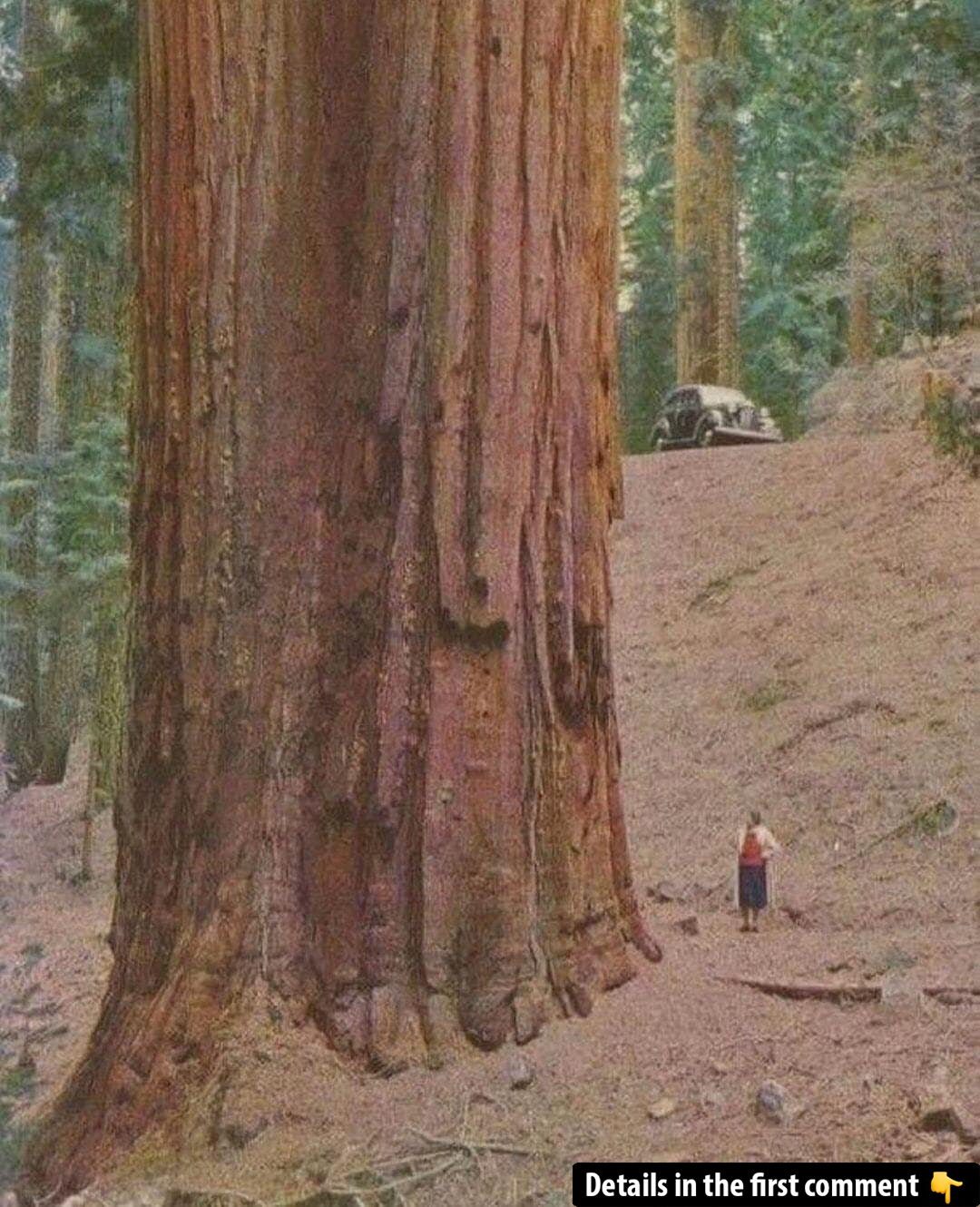California is home to some of the world’s most iconic landscapes, but not all of them have withstood the test of time. Converse Basin Grove, once the most dense and majestic Giant Sequoia forest in existence, is a testament to the profound loss California has experienced. It stands as one of the state’s most devastating environmental crimes, a forgotten chapter of reckless destruction and disregard for nature. The story of how this grove was decimated between 1892 and 1918 is an example of both human ambition and nature’s resilience—one that led to the disappearance of nearly 8,000 ancient trees and set the stage for the birth of the conservation movement.
The Glory of Converse Basin Grove
Before the devastating effects of logging, Converse Basin Grove spanned over 6,000 acres and contained some of the largest and oldest trees on the planet. Nestled in the southern Sierra Nevada Mountains near Kings Canyon National Park, this grove was home to thousands of Giant Sequoias, trees so massive and ancient they seemed to defy belief. With trees that were more than 2000 years old, Converse Basin was a marvel of nature, a sacred place where every tree told a story of survival across millennia. But this unparalleled natural wonder would not be left to grow and thrive in peace for long.
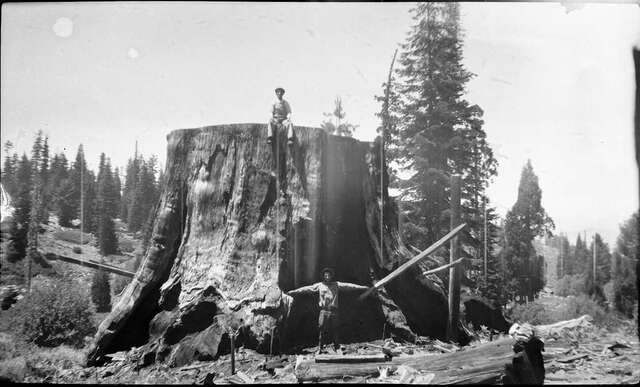
Video
Watch the video to journey through the Sequoia trees, including the General Grant Tree and Converse Basin Grove. These towering giants offer a breathtaking experience of nature’s beauty!
The Timber and Stone Act of 1878: An Unlikely Catalyst for Destruction
The story of the grove’s destruction began with the passage of the Timber and Stone Act of 1878. The intent of the law was to encourage development in sparsely populated areas by providing cheap land for timber and stone extraction. However, what it achieved instead was the systematic exploitation of California’s magnificent landscapes, particularly the Sierra Nevada, leading to the mass destruction of old-growth forests.
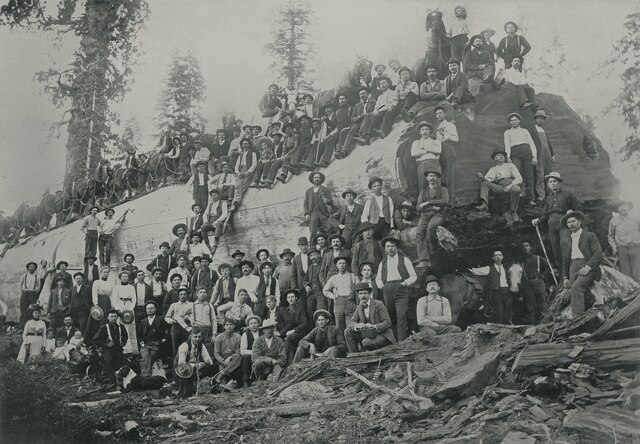
The law allowed individuals to claim vast expanses of federal land, including timber-rich regions like Converse Basin, for a mere $2.50 per acre. This legal loophole led to the rise of lumber companies, such as the Kings River Lumber Company, which exploited the area under both lawful and fraudulent means.
The Kings River Lumber Company and Its Relentless Expansion
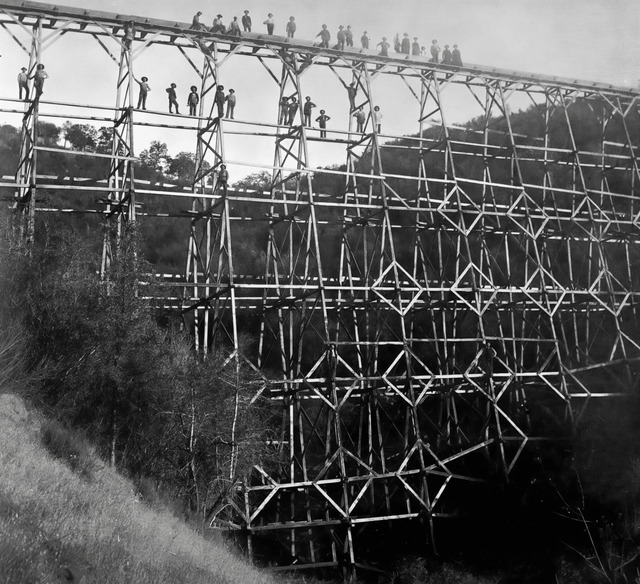
Founded in 1888, the Kings River Lumber Company quickly set its sights on the mighty sequoias of Converse Basin. To transport the massive timber down from the mountains, the company constructed a 54-mile-long flume, a wooden water slide that carried the logs swiftly to mills below.
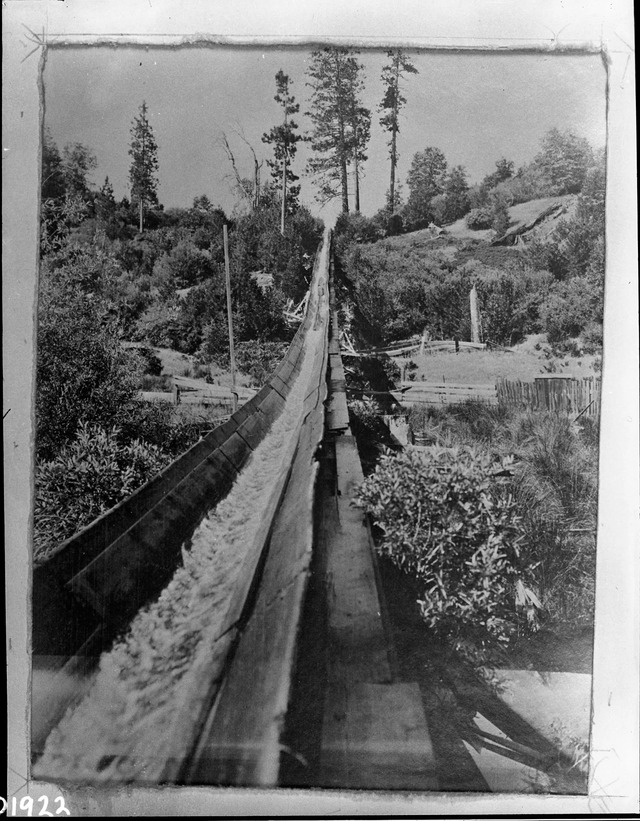
This impressive engineering feat, known as the “flume,” allowed the company to log trees efficiently, while a narrow-gauge railroad carried the timber to the nearest train station. These developments marked the beginning of industrial-scale logging in the Sierra Nevada—a development that would prove disastrous for the region.
The Devastating Impact of Clear-Cutting

The logging of Converse Basin was nothing short of catastrophic. The Sanger Lumber Company, which took over the Kings River Lumber Company in 1895, employed brutal clear-cutting techniques to fell the trees. Over the course of just 20 years, more than 8,000 giant sequoias were destroyed, some over 200 feet tall and over 2,000 years old.
The company’s drive to maximize profits led to reckless practices, with workers felling trees without regard for the long-term consequences. The scale of the destruction was immense—an entire ecosystem was lost, and only a handful of trees survived. Among the few spared was the Boole Tree, which remains one of the largest sequoias in the world today, serving as a solemn reminder of the forest’s original grandeur.
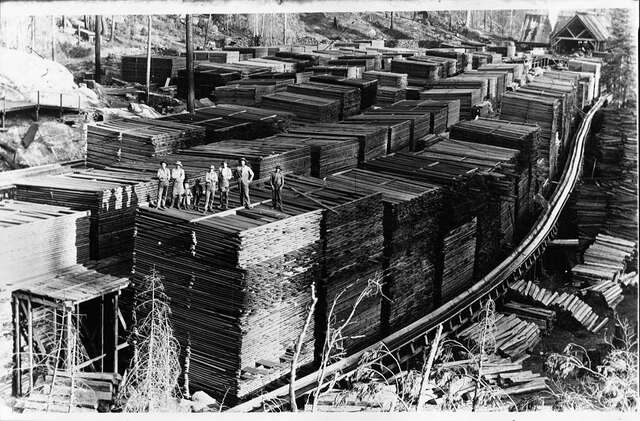
The Last Stand of the Boole Tree
The Boole Tree, located at the northern edge of the grove, was the only giant to survive the destruction of Converse Basin. Named after the foreman who oversaw the logging operation, the Boole Tree is the eighth tallest sequoia in the world and holds the record for the largest base circumference at 112 feet.
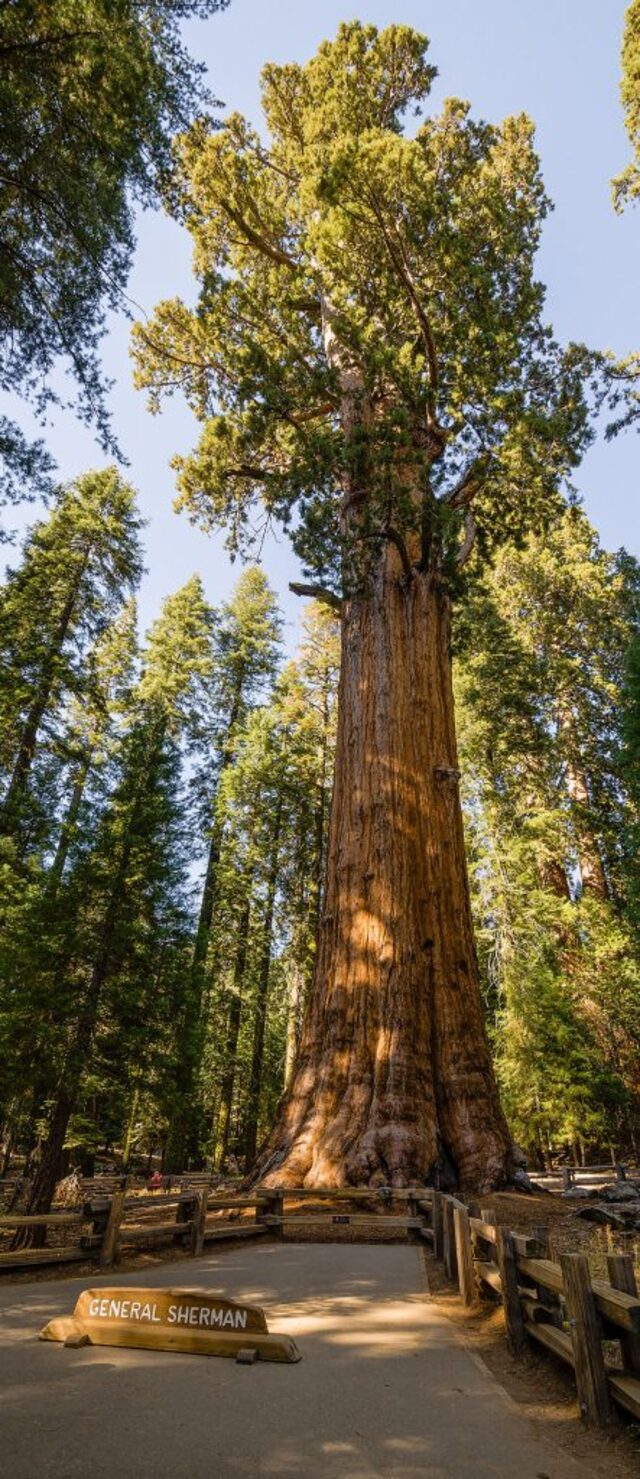
Estimated to be over 2,000 years old, the Boole Tree stands as a living monument to both the resilience of nature and the destructive tendencies of humanity. While its survival was a stroke of luck, it also represents a grave symbol of human greed and short-sightedness.
The Aftermath: From Tragedy to Scavenging
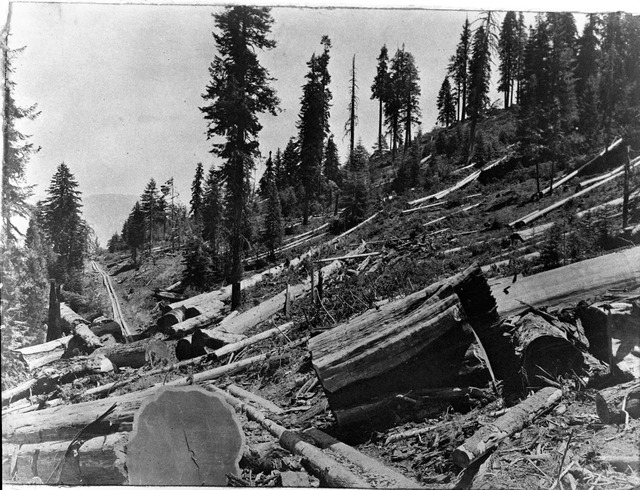
Following the devastation of Converse Basin, the Sanger Lumber Company faced financial troubles and was ultimately sold in 1905. What followed was a period of secondary logging, which can only be described as scavenging. The remnants of felled trees were left to rot, and the ecosystem was left to heal at its own pace.
By 1905, the region had been so thoroughly ravaged that it resembled a “vast and lonely cemetery,” as described by Yale English professor Henry Seidel Canby. What had once been an awe-inspiring natural treasure trove was now a barren wasteland, with little left to show for the years of destruction.
The Road to Preservation: How Converse Basin Inspired the Conservation Movement
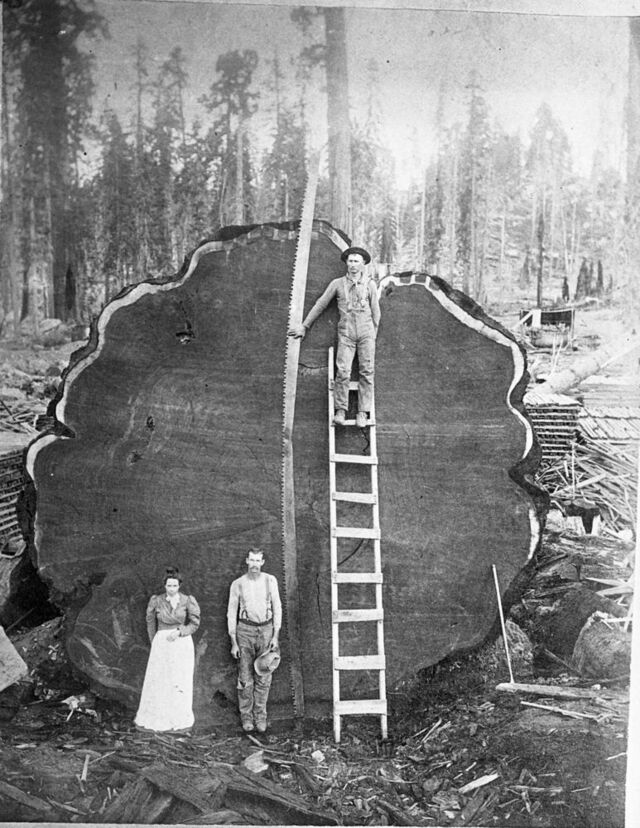
The devastation of Converse Basin did not go unnoticed, and it played a pivotal role in shaping the early conservation movement in the United States. As the destruction of these giant trees became more widely known, activists and naturalists, led by figures like John Muir, began to demand stronger protections for California’s natural landscapes. This movement helped lay the groundwork for the creation of national parks and protected areas, ensuring that other groves would not share the same fate as Converse Basin. The loss of such an iconic place helped raise awareness about the fragility of our natural heritage and the need to safeguard it for future generations.
The Environmental Legacy: Challenges of Conservation and Modern Threats
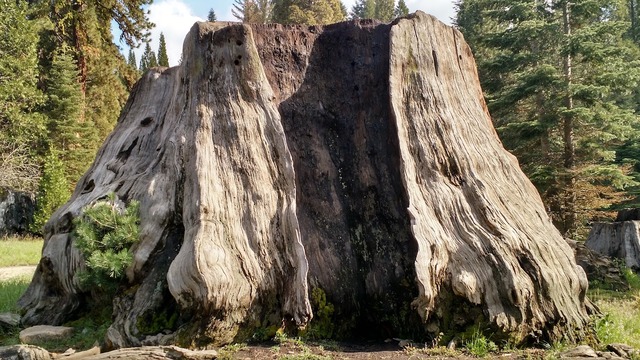
Today, most of California’s remaining sequoia groves are under public ownership and management, with a focus on conservation. However, the fight to protect these majestic trees is far from over. Over the past century, the practice of fire exclusion has altered the natural fire cycles that these forests depend on for regeneration. In addition, the warming climate and the ongoing droughts have increased the risk of catastrophic wildfires, putting the giant sequoia ecosystem in greater danger than ever before.
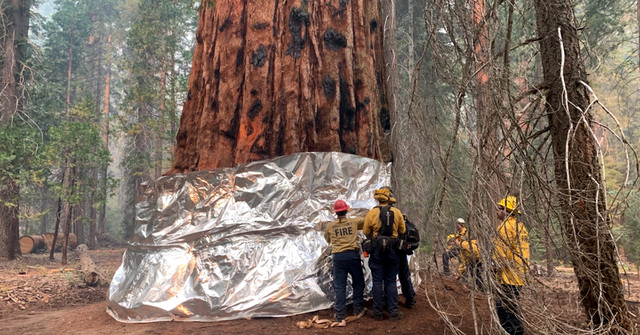
The 2020 Castle Fire in California was a devastating reminder of how vulnerable these ancient trees have become. Estimates suggest that nearly 10,000 mature giant sequoias were killed by this fire, representing 10-14% of the total population. While sequoias are typically resilient to fire, the combination of drought, climate change, and other factors has left them increasingly susceptible. The loss of these trees further underscores the urgency of addressing the growing threats to the sequoia ecosystem and the need for a new approach to forest management.
Conclusion: A Call for Protection and Reflection
The fall of Converse Basin Grove is a tragic chapter in California’s environmental history, but it also serves as a powerful reminder of the fragility of our natural world. The destruction of this awe-inspiring grove highlights the dangers of unchecked exploitation and the importance of responsible stewardship. As we face the challenges of climate change and habitat destruction today, we must remember the lessons of Converse Basin and ensure that future generations inherit a world where nature is preserved and protected for the benefit of all. The resilience of the giant sequoias may offer hope, but it is our collective responsibility to safeguard their future before it is too late.
Video
Check out the video to discover the 15 biggest trees in the world. These colossal wonders of nature will leave you in awe!
